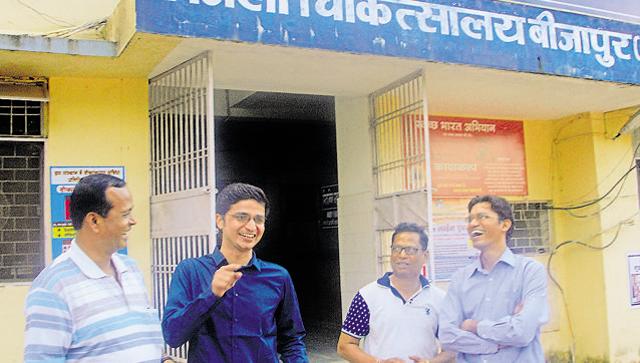
The curious case of more number of doctors signing up for jobs in Maoist affected areas
Despite the high levels of violence that many Maoist affected areas experience, more number of doctors are now opting to work in such regions. The higher salary packages and other perks on offer are deemed as the major reason. In the last two months alone, more than 84 super-specialists and medical officers have joined to work in Sukma and Bijapur-two of the affected areas in Chattisgarh.
Higher salary, career growth, free use of club, cinema on call…
The case of 28 year old Dr Arun Chaudhry is illustrative of the perks in wait for working in such areas. Hailing from Aligarh in western Uttar Pradesh, Dr. Arun visited Chhattisgarh for the first time just three months ago. Smitten by the beauty of the land among other things, he, along with his wife moved from Aligarh to a new one-bedroom apartment in the transit hostel in the Bijapur District Hospital complex. The accommodation facilities come courtesy of the state government’s new set of initiatives to bring doctors to tribal belts.
Speaking to Hindustan Times, the doctor said that his mother wept at the couple’s decision. But he was excited about the challenges and opportunity to get the gynaecological ward up and running. The doctor hasn’t revealed how much exactly is the high salary that has been offered him. However, it’s known that a pediatric and general surgeon is offered Rs 2.6 lakh a month. But it was the hospital infrastructure and social support which helped Chaudhry make up his mind.
Among the amenities include the city’s only club which the couple can use for free-a swimming pool and tennis and badminton courts being part of the club. Also, the district’s sole cinema hall shows films for them on call. For instance, the couple called them the other day and expressed their wish to watch the Dhoni biopic and they complied. The attention takes getting used to, adds the doctor’s wife.
More significantly, there’s the opportunity for career growth. According to the doctor, the OT in Bijapur is better than the one at JN Medical College in Aligarh. Also, new modular OT is being constructed with 10 ICU beds. Six ventilators are also coming up. A new 50 bed gynaec wing will be ready by the next month. A blood bank is awaiting the drug controller’s nod.
What made the doctors take an interest?
A message that Dr. Ayyaj Tamboli-Bijapur district collector shared on WhatsApp and Facebook on September 6 is one of the main reasons for this newfound interest in such areas by the medical fraternity. In the message, Dr. Ayyak, a medical graduate who joined the IAS says that they are developing a state-of-the-art district hospital. It’s for this facility that post-graduate doctors and general duty doctors are called for.
He said that his message has received 116 responses out of which 50 are from specialists and 66 from general practitioners. As per the doctor, about half of them are going to visit Bijapur before making the decision.
Most of the doctors who have applied are from Maharashtra and Andhra Pradesh. The doctor said that once the road to Bhopalpatnam- a town bordering Telengana and Maharashtra is done by next summer, connectivity to AP, Maharashtra and Telangana would improve. This, he hopes would lead to more doctors coming in since the said sates have a surplus. These sates also account for almost a fourth of India’s near 53,000 MBBS seats.
But how are they able to offer higher salaries?
The SOS messaging is just one of the methods the Chattisgarh government initiated this April to lure doctors and medical staff to live and work in districts affected by Maoist extremism.
As per Subrat Sahoo, principal secretary, health department, Chattisgarh, more autonomy to district collectors and access to flexi-funds like National Health Mission(NHM) and district mineral funds(DMF) have made it possible to offer specialists salaries that are two and a half to three times of what’s obtained elsewhere.
Depending on the specialty, specialists would earn between Rs. 2 lakh and Rs. 2.5 lakh every month, said R Prasanna, director of health services. A pediatrician and general surgeon, for instance was offered Rs 2.6 lakh to Rs 1.59 lakh from NHM and Rs. 1.1 lakh from DMF.
The administration was savvy enough to understand that money is not all that it takes. So, they followed up on other incentives as well.
Examining why civil servants and army personnel adjust easily in remote districts, they have identified infrastructural and social support as the key elements for it, says Prasanna.
Image credits: hindustantimes.com